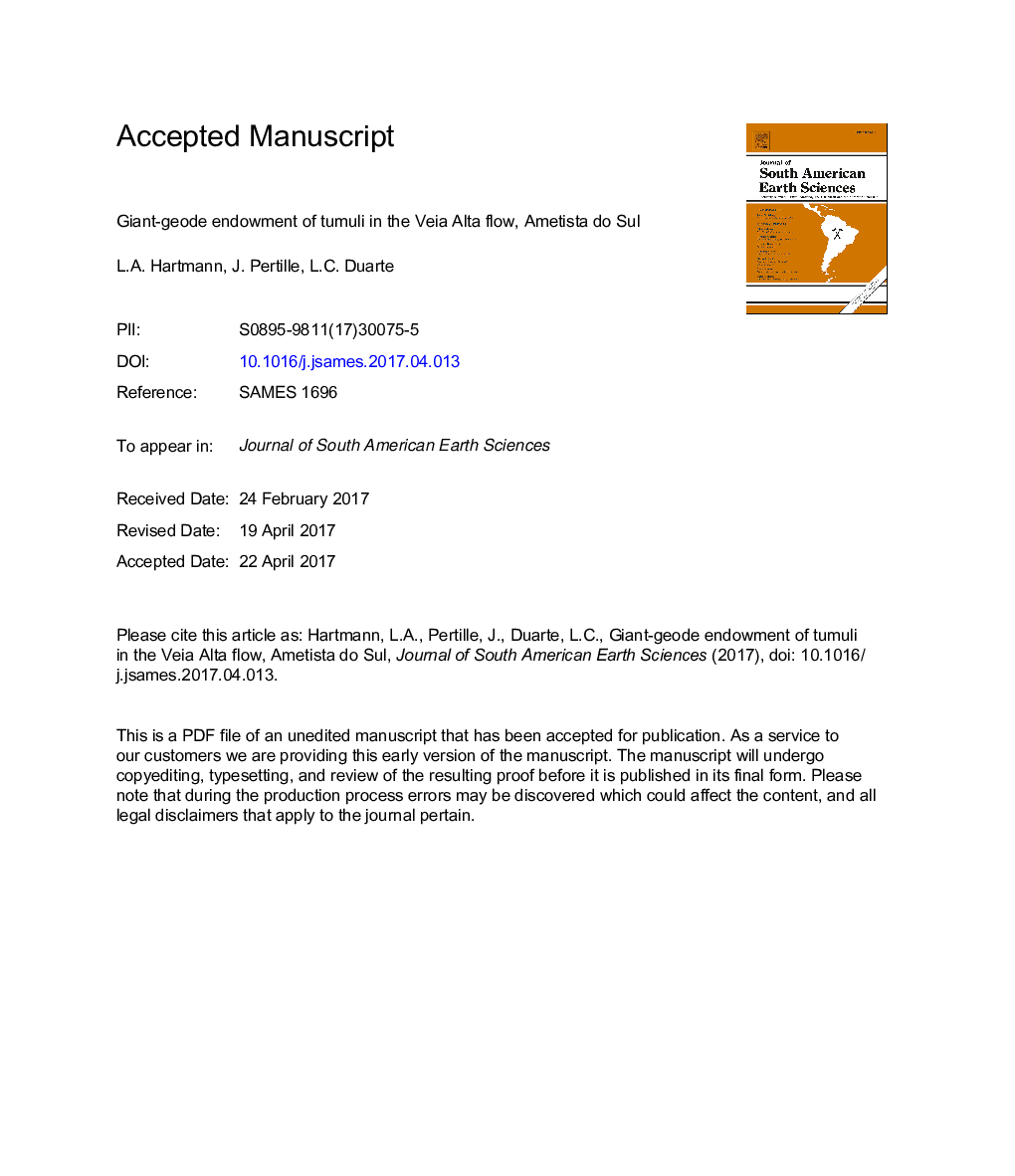| Article ID | Journal | Published Year | Pages | File Type |
|---|---|---|---|---|
| 5780363 | Journal of South American Earth Sciences | 2017 | 29 Pages |
Abstract
Tumuli are a common feature of pahoehoe basaltic flows, interspersed with pits, and furnished the necessary volume of rock in the Paraná volcanic province for hydrothermal alteration and ballooning to form large cavities (1-2Â m common). Filling by amethyst and other minerals resulted in the largest world deposit of geodes, Ametista do Sul. The flat-lying fracture positioned 1Â m below the 2-3Â m thick geodic level crosses the plateau and is a major guide for exploration and gallery opening. The geodes are limited on the top by the platy joint layer, which is covered by an auto-breccia with undulating lower limit. This wave mimicks and is internal to the structure of tumuli and pits at the surface. This field-oriented survey of galleries selected out of 300 active mines resulted in the description of the internal structure of the remarkable Veia Alta pahoehoe flow, in addition to observations in Uruguay.
Related Topics
Physical Sciences and Engineering
Earth and Planetary Sciences
Earth and Planetary Sciences (General)
Authors
L.A. Hartmann, J. Pertille, L.C. Duarte,
